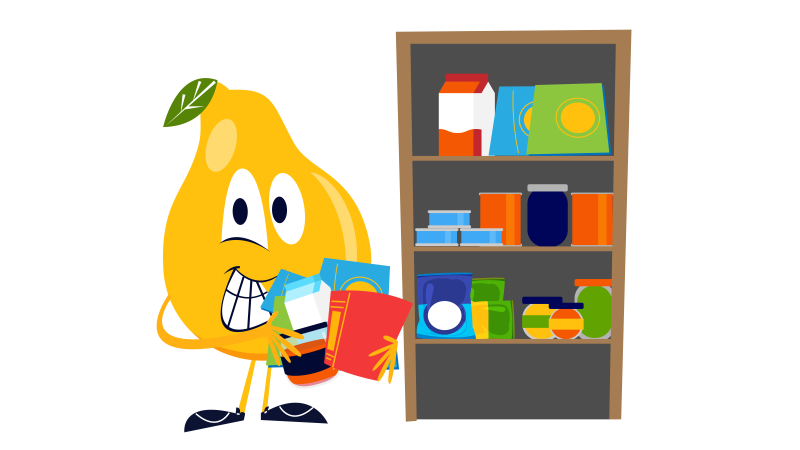
You’ll find a variety of snacks throughout the store. Many snack foods are made with refined grains and can be high in added sugars, sodium and fat. The key is to shop for snacks that fit within your MyPlate plan most of the time. Snacks that have fiber, protein, fruits, and vegetables will help keep you feeling full between meals. Use snacking as an opportunity to add more MyPlate food groups into your day!

Snacks: Know Before You Go
- Compare the nutrition labels of your snacks to find ones with less sodium, fat, and/or sugar based on your preferences and health needs.
- Popcorn is a POPular snack! Try popping the kernels in a pot on the stove or a paper bag in the microwave for a crunchy serving of whole grains.
- Think about which snack foods will satisfy your hunger between meals. Apples and peanut butter, cheese and whole grain crackers, or yogurt topped with canned fruit are just a few examples!
This chart gives you some examples of how to combine two different food groups to build a balanced and satisfying snack. Pick one food from two different food group columns. You can mix and match for so many different snack options!
| Fruits | Vegetables | Grains | Dairy | Protein |
|---|---|---|---|---|
| Dried Fruit | Carrot Sticks | Whole Grain Crackers | Sliced or Cubed Cheese | Hummus or Bean Dip |
| Apple | Roasted Chickpeas | Whole Grain Granola Bar | Yogurt | Jerky |
| Banana | Cherry Tomatoes | Whole Wheat Bread or Toast | Cottage Cheese | Peanut Butter |
| Berries | Pickles | Tortillas | Dairy Milk or Soy Milk | Nuts |
| Frozen Fruit | Salsa | Popcorn | Pudding | Sunflower or Pumpkin Seeds |
| Canned Fruit | Avocado | Cereal | String Cheese | Hard-Cooked Egg |

